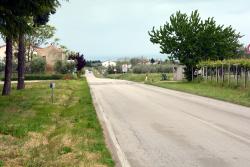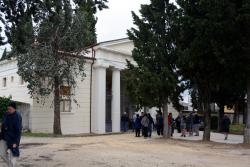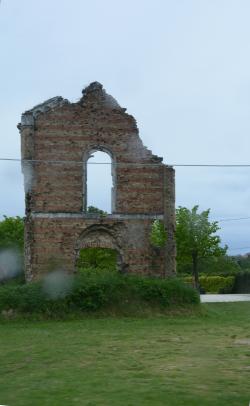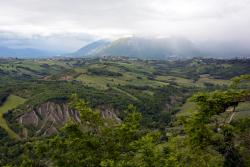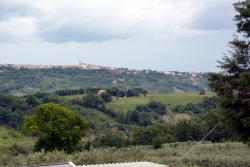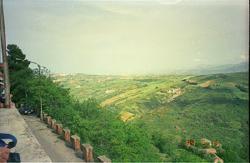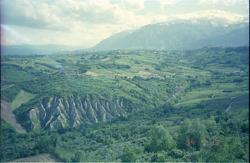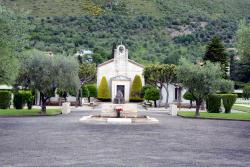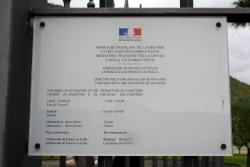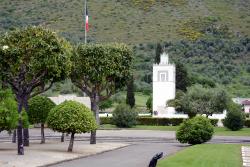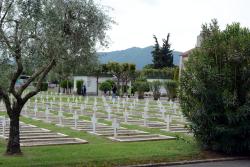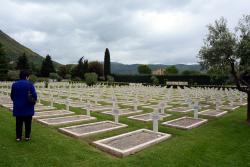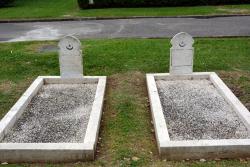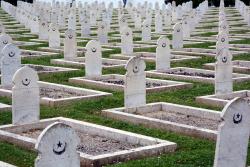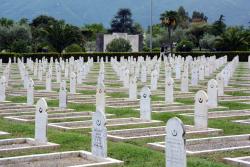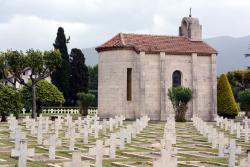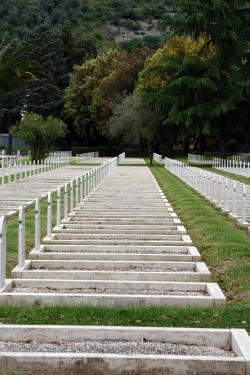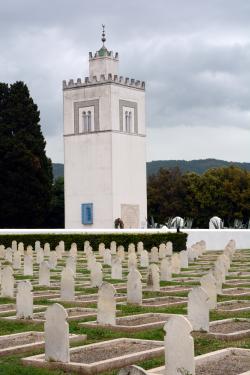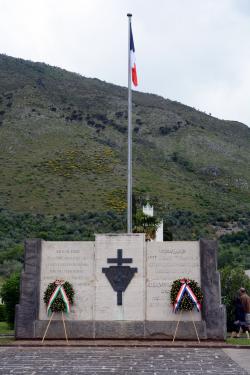Europe 14 - Day 21Cassino Commemoration - Day 3: The Battle of Orsogna then back across the Apennines to CassinoThe New Zealand Division arrived in Italy from North Africa in mid-1943 as part of the British 5th Army. They moved north along the Adriatic Coast while the American 8th Army moved along the western Mediterranean side towards Rome. The 5th Army were soon bogged down on the south side of the Sangro River, and the Americans ground to a halt at Cassino. After the Sangro had been crossed the NZ Division took the town of Orsogna and then tried to move north and west. They met stiff resistance. The NZ tanks were ordered to move west from Orsogna, along the crest of the ridge but soon came under fire and all were disabled. OrsognaOn our tour, we drove inland from the port of Ortona along the same ridge that the tanks had followed, 70 years before. We stopped at the local cemetery where the tanks had sheltered, before we turned back to the town of Orsogna. The French Cemetery at VenafroAfter exploring Ortona, we were back on the bus ready to cross the Apennines again. The NZ Division had taken a similar route in early 1944 when they were pulled out of the Adriatic side and sent to sort out the stalemate at Cassino. On our voyage, shortly before arriving at Cassino we stopped at the French War Cemetery at Venafro. It is laid out in a similar fashion to Commonwealth cemeteries, but the graves and headstones are quite different. The diversity in the French forces was very apparent: Christian crosses, Muslim Star and Moon and Jewish Stars. It was a reminder to many people of the role the Free French had played in the war in Italy.
Back to previous day
Last updated: 26/10/2014 |
